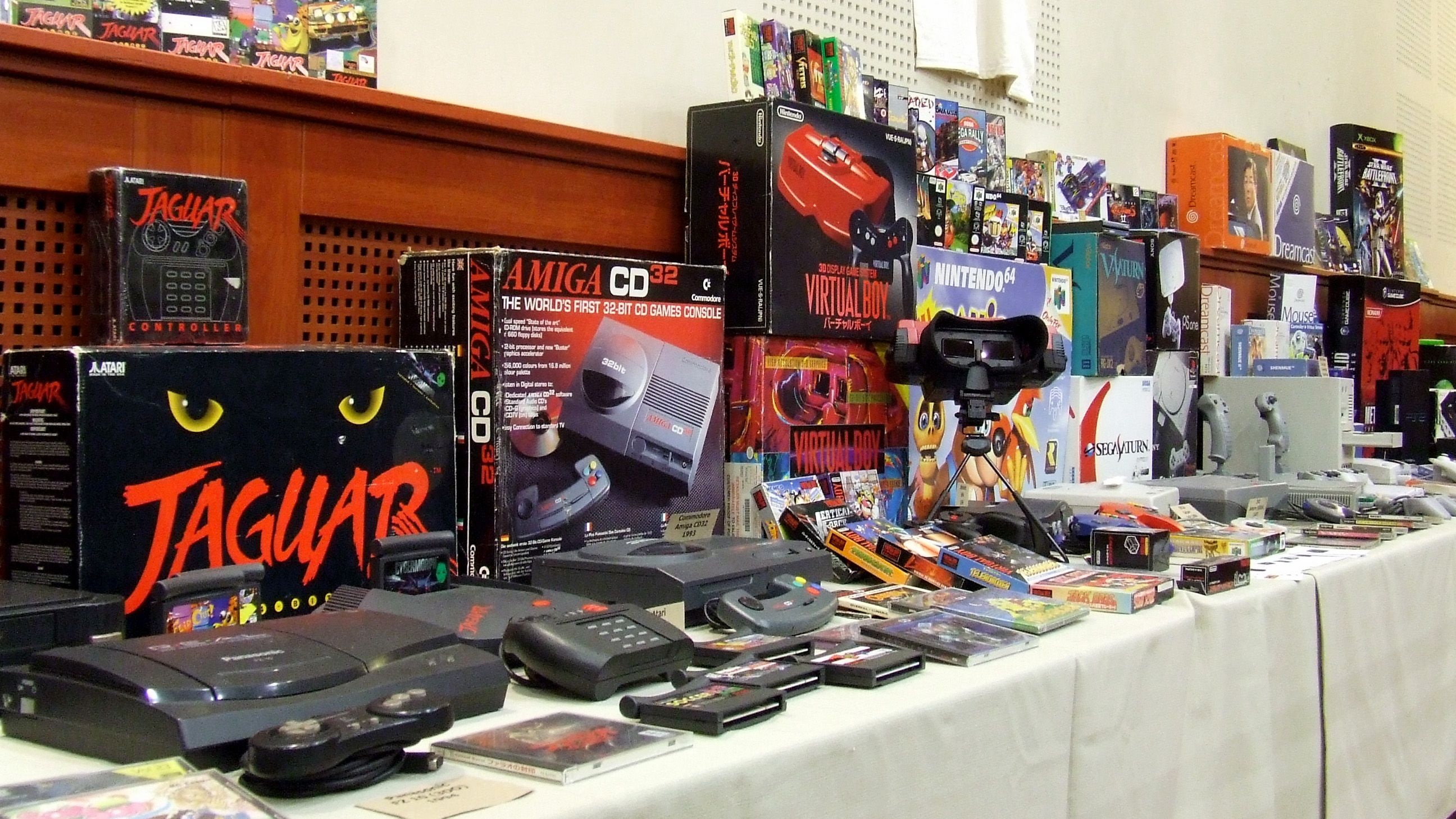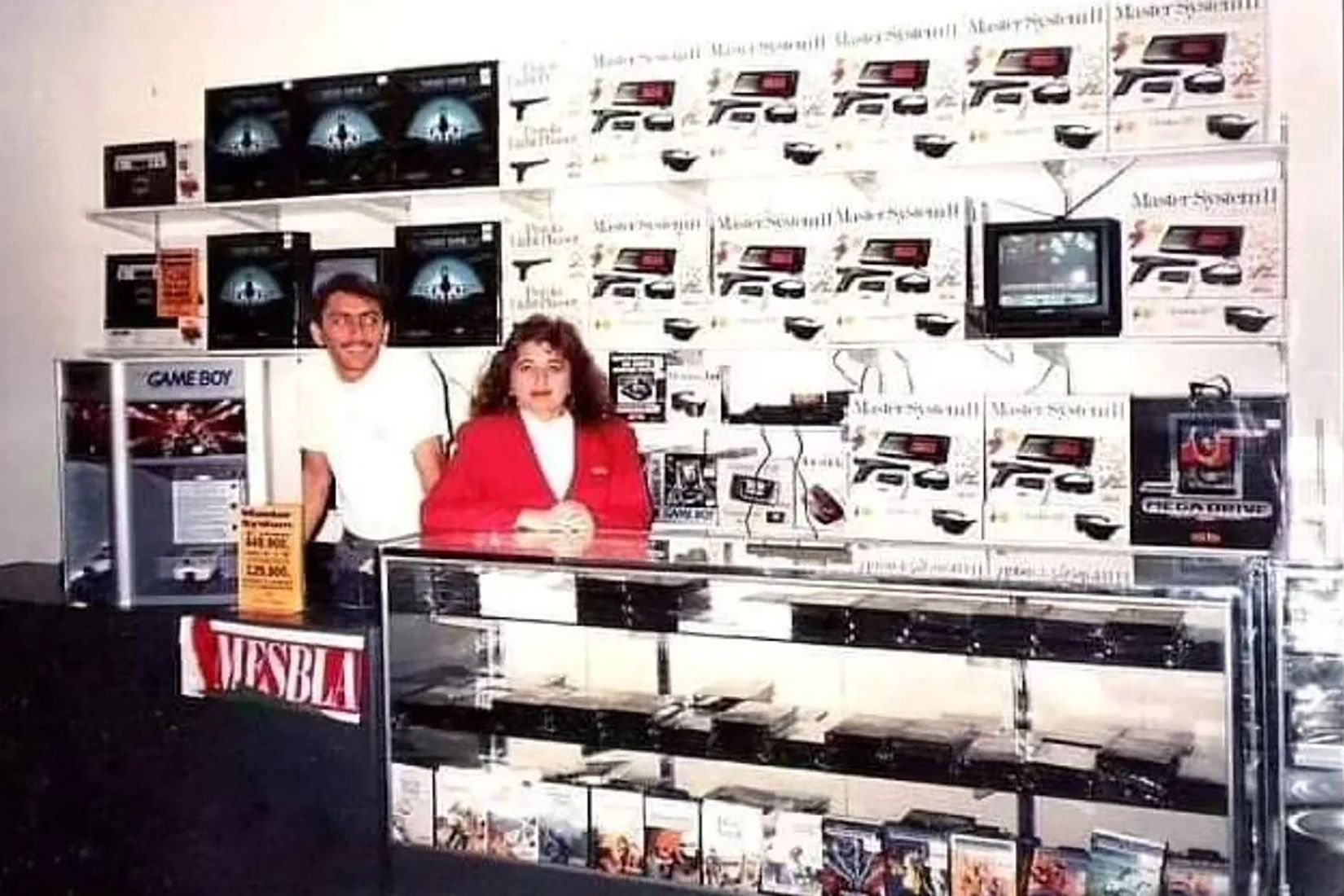It’s not a clone or a bootleg, but it’s also not the original hardware either. In Brazil, the Sega Master System lives on as a licensed, ROM-on-Chip (RoC) console. It's basically like a self-contained emulator—still manufactured and stocked on retail shelves, preloaded with 132 classic games. 40 years after its original release, and 36 years since it made its way to Brazil, the 8-bit system that vanished from shelves elsewhere is alive and well.
This isn’t just retro gaming dressed up as a collector’s item. Brazil has an incredibly unique and fascinating gaming culture, born out of frustrating tariff policies and other factors that isolated them from the greater global gaming industry. The original Master System was hugely popular in Brazil, manufactured in-country by TecToy, the electronics company that still sells it to this day. In its newest iteration, it’s a practical, affordable, and accessible console marketed to lower-income families and kids getting their first system.
In Brazil, the Master System has never really left. Its continued presence says less about nostalgia and more about how the country’s gaming culture developed on its own terms. High tariffs, local manufacturing, and a deep-rooted emphasis on value helped create an ecosystem where older hardware stayed viable far longer than elsewhere. What looks like retro persistence from the outside is, in context, a reflection of economic ingenuity and lasting demand.

Related
5 video game consoles that never stood a chance
These five failed consoles flopped hard, but they still left a mark on gaming history — whether as missteps, missed opportunities, or cult classics.
The Master System never really left store shelves
Ongoing production and sales
As of 2025, Tectoy continues to manufacture and distribute models like the Master System Evolution. Unlike the original cartridge-based system, it's a simple plug-and-play setup. By 2016, Tectoy had sold more than 8 million Master Systems in Brazil. More recently, in 2021, the company reported they are still producing over 200,000 consoles annually across its vintage lines—including the Master System, Mega Drive, and Atari models.
The Master System was originally launched in 1985, but didn't arrive in Brazil until 1989. It has remained in continuous production under TecToy for 36 years—longer than anywhere else in the world. While other consoles have come and gone, the Master System stayed on store shelves, updated for new generations but always recognizable. The Evolution is the newest in a line of other cartridgeless Sega consoles, like the Master System Super Compact and Master System 3 Collection.
Master Systems continue to be marketed as affordable, family-friendly devices—it's the type of game system you buy a young kid for their first console. A model with 132 built-in games and two controllers can be bought for around R$220 (roughly USD $50). TecToy has made clear it has no plans to stop production, since demand remains strong.
Who Still Buys the Master System?

Source: Reddit
TecToy still markets the Master System to two core groups: nostalgic adults who grew up with Sega—which is basically any older gamer in the country—and families buying a first console for their kids. But what makes this more than a niche retro product is what it still represents—for both.
The Master System was many Brazilians’ first introduction to home gaming. But the circumstances around that mattered. Brazil’s economic structure in the late '80s and early '90s didn’t just limit access—it defined how gaming culture formed. High import taxes and restrictive trade policies made consoles scarce. There was no mainstream gaming market, so Brazil built its own. Tectoy created a localized ecosystem with licensed consoles, translated games, and tailored marketing—establishing not just distribution, but identity.
In cultures where games were easily available, early gaming was something you bought. In Brazil, it was something you fought for. And that matters.
Struggle adds meaning—when something is difficult to access, the attachment formed is stronger, longer-lasting, and more deeply tied to personal and cultural identity. That’s what gives the Master System its staying power. It’s not just nostalgia for a device—it’s memory wrapped around a moment when gaming became real, local, and earned. Adults who grew up gaming during that era still buy the system today—sometimes for themselves, sometimes for their children. They’re not just sharing a memory. They’re passing down a story about how Brazil made gaming its own.
TecToy still markets older systems to retro fans, and the nostalgia is real—but the appeal goes deeper. For families who lived through Brazil’s early gaming era, when access was limited and every console felt hard-won, the Master System still represents something earned. It reflects a culture that didn’t just consume gaming—it truly built its own. That legacy gives the system weight, especially for those passing it on. It’s not just about retro charm or budget pricing—it’s about sharing a piece of gaming culture that was made in Brazil, and made to last.
A market shaped by different conditions
A retro market built on real needs
Brazil’s gaming culture wasn’t late to arrive because of a lack of interest—it was boxed out by policy. During the late '80s and early '90s, import restrictions and complex tax structures made most international consoles difficult or impossible to buy, unless obtained through smuggling or the grey market.
But instead of waiting for change, Brazil built its own gaming infrastructure—with TecToy at the center. The company didn’t just import Sega systems—it produced them locally, adapted them for the region, and developed games that spoke directly to Brazilian players. That’s why Sega succeeded where Nintendo failed.
TecToy and Sega worked closely, establishing a partnership that aligned with Brazil’s specific needs. Nintendo, by contrast, refused to partner—even after Marcos Santos, one of Gradiente's engineers, had reverse-engineered the NES and proven it could be adapted for Brazil’s PAL-M television standard. Gradiente was another major electronics company, aiming to replicate TecToy’s success with Sega using Nintendo hardware.
When Nintendo wouldn't work with them, they instead released the unlicensed Phantom System. Gradiente didn’t just make the hardware—they sold bootleg Nintendo cartridges under their Falcon Soft label. Nintendo’s reluctance backfired: the Phantom System became Brazil’s NES, and the actual officially licensed NES arrived too late to matter. But the experiment opened the door for official Nintendo consoles later on, including the SNES and N64.
Sega, meanwhile, had the momentum—and TecToy used it well. One of the most iconic examples is Wonder Boy, reimagined in Brazil as Turma da Mônica na Terra dos Monstros, starring a character from one of the country’s most beloved comic series. This wasn’t just a reskin, it changed the emotional center of the game to be more personal.
That’s why nostalgia around the Master System carries a different weight in Brazil. It isn’t just remembering an old console—it’s remembering how people made gaming their own. The stories, the characters, even the games themselves were different. The Master System endured not because it was preserved, but because it was transformed—becoming something that belonged to Brazil in ways few systems ever have.

Related
When FBI raids and a rare SNES cheat device collided: The Game Wizard’s mysterious history
The Game Wizard exemplifies why retro gaming is as much about stories as it is about the hardware
Affordability, emulation, and the future of Brazil’s gaming scene
Brazil’s gaming market may be more globally connected than ever, but the same structural challenges still shape access. Imported consoles and physical games remain expensive—pricing many players out. Local manufacturing is what keeps hardware like the Master System Evolution affordable and on store shelves.
That’s part of why emulation isn’t just accepted—it’s standard. Software emulation on PCs is widespread, and it fills the same role: offering broad access to games that may have never been released in Brazil or are difficult to obtain legally or affordably. While Nintendo continues to aggressively pursue legal action against emulators like Ryujinx, other companies—like Sega—have taken a different approach. With the Master System Evolution, Sega has embraced hardware-based emulation in a format that matches how many Brazilians already play. Plug-and-play systems with preloaded games, no cartridges, and minimal setup meet players where they are.
In places where the market can’t or won’t provide, people find a way—and emulation remains one of the most reliable paths. The Master System’s endurance isn’t a relic of nostalgia—it’s a response to reality.
.png)


![Apollo 13: What Went Wrong [video]](https://www.youtube.com/img/desktop/supported_browsers/firefox.png)
